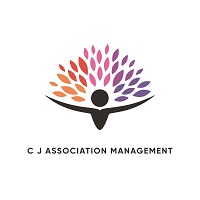It’s no great secret that the membership sector has undergone significant change in the last few years, thanks to a natural evolution of technology and external environmental and global factors. More so than ever, associations play a vital role in bringing together like-minded individuals, professionals, and enthusiasts. However, a critical challenge that many associations face is ensuring that their members are truly deriving value from their memberships. As the needs and expectations of members continue to evolve, associations must find ways to assess satisfaction, adapt to changing needs, and cater to diverse member types throughout the entire membership journey.
Measuring Member Satisfaction
The foundation of a successful association lies in understanding the level of satisfaction among its members. It’s not enough to assume that members are content – active measurement and feedback mechanisms are essential. Regular surveys, feedback forms, and open channels of communication can provide valuable insights into members’ experiences. Asking direct questions about the perceived value of the association’s offerings, events, and resources can shed light on what is working well and what needs improvement. Having a touch point that remains constant, reliable and trustworthy will open communication lines with members and help you gain a strong, first hand understanding of what they need, like and are frustrated with.
Agility in Responding to Member Needs
Change is a constant, and the needs of association members are no exception. Associations must exhibit agility in responding to evolving member requirements. This requires a willingness to adapt strategies, offerings, and engagement methods. Keeping a close watch on industry trends, keeping abreast of the shifting needs of members, and remaining open to innovative ideas are key to maintaining relevance and resonance.
Tailoring the Member Journey
Associations often have diverse member profiles, including students, early-career professionals, seasoned experts, and retirees. Each of these groups has distinct needs and expectations. A one-size-fits-all approach might not suffice, in fact, it probably won’t. Associations should work to map the member journey to determine the unique requirements of various member types. This could involve offering specialised resources, mentorship programs, networking opportunities, communication streams and channels and tailored events.
Personalisation and Customisation
In the era of personalised experiences, associations can harness technology to offer tailored content and interactions. Using data-driven insights, associations can recommend relevant resources, events, and connections to individual members. Customisation not only enhances member satisfaction but also showcases the association’s commitment to catering to each member’s specific interests and goals. Investing in the right tech channels and platforms and hooking it up with your CRM could be the most valuable investment you make in terms of automating communications in a way that delivers a personalised experience.
Building a Vibrant Community
Value isn’t solely derived from resources and events – the sense of community within an association is equally important. Facilitating interactions and connections among members fosters a deeper engagement that goes beyond mere transactional benefits. Providing platforms for members to share their experiences, insights, and challenges can create a collaborative atmosphere that enhances overall value.
It’s a competitive market out there, and there really is no time or space to assume your members are content. The quest to ensure members derive true value from their association requires a proactive and member-centric approach. It’s more important than ever to adapt to changing needs, and tailor experiences to cater to different member types.
CJ Association Management is an established, specialist association management company providing support services tailored for the membership sector.










Leave A Comment